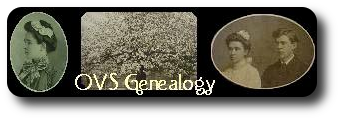 |
|
|
|
CemMapperHelp - Guide - Mapping CemeteriesIntroductionThe CemMapper requires that the cemetery be placed in 9 X 9 grids. This may sound difficult but it is rather easy in its implementation. There is more work involved in gathering the transcription which is described below. If you are using an existing transcription the Stone and Row fields will be ignored by the CemMapper. The CemMapper depends on the Zone and ZonePos fields to organize and produce the map. Preparing The DataIt is not necessary to enter the empty graves in the CemMapper. If the grid was prepared correctly the mapper will show the unused areas between the graves. How ToDownload, view, or print the example grid entry forms. Download or view and print the "Grid Entry Form" and make copies as needed. (Our Example - 2 copies) Finding the starting point. Row 1, Position 1 is always the most south-west corner of the cemetery or section that is being transcribed. At the cemetery find the most south-west corner of the section you are working on. This is where to begin. Look towards the East and find the most southern stone. It does not have to be in the current row or even the current grid sheet this is the current 9 rows. Now count, from south to north, the graves and the empty spaces to align yourself to the grave you are standing at to the grid. In our example we used row 6 as the starting point since there are only 4 rows and the rows were close to the road with empty space at the west side of the cemetery. The row just to the east of this row has 2 stones/graves to the west of it so this grave is the third place. So on the example cemetery the grid position is at position 6.3 and Addison S. Lauth is written on the grid. See Example. Move to the next stone/grave and count the empty spaces using the method just described above. The example had no spaces. This grave/stone-position 6.4 is where Mary & John Lawrence are buried. See example. Move to the next stone/grave and count the empty spaces. In the example there are three empty/unmarked graves. Position 6.8 is Rachel Lauth. If there are more grave/stones to the north of stone/grave 9 then Zone B1 will begin. In our example B1 is empty for position 1.1 - 6.2 so position 6.3 is John Lauth. See example. Repeat this process until all 9 rows of this zone are surveyed. If there are more than 9 rows then Zone A2 begins. Note: Zone A2 will always be directly east of Zone A1. If this is a new transcription the other information can be collected on another sheet. We do most of our transcriptions by photo and only record at the cemetery what we know the photo will not display. Entering the DataEntering the mapping coordinates is very easy. The Zone (A1-Z....) is entered in the Zone Field. The grid position is (small numbers in the top-left corner of each grid cell) entered in the ZonePos field In our example we had already completed the transcription and added the mapping later. You will notice in the original transcription of the example cemetery that Adam & Sophia Fissel were at Row 1, Stone 1, but in the mapper we placed them at position A1:4.3. We had transcribed the original cemetery from East to West but were very easily able to adapt this transcription to the CemMapper's West to East orientation. Creating the MapThe CemMapper creates the cemetery map following the zone and positions entered in the CemMapper field. Before the map is created an error check takes place with items that need fixed before running the software. It gives a clear description of the bad data and what is necessary to correct it. Once the errors are corrected the map will be created.Distributing The Mapped CemeteryThe completed map can be copied to a website or placed on CD. The upload.txt list all files that need to be copied. Browse through the completed mapped cemetery. |
|
|
|
Copyright 2004-2025 OVS-GENEALOGY OVS TAG
Contact: support@ovs-genealogy.com
To receive replies make sure to allow email from this address in your email filter
www.ovs-genealogy.com